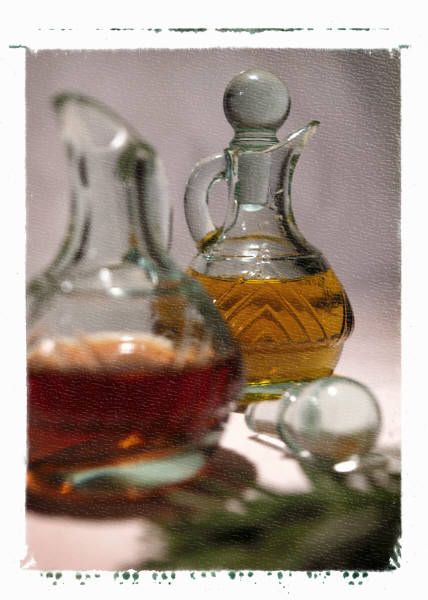Project Description
Salad Dressing Comes to the Rescue
© Mother Linda’s

You can search the Web and find information about the history of salad dressings. They go back to ancient times and in their simplistic form contain oil and some acid like vinegar or lemon juice. Oil and vinegar, which normally repel each other, are whisked together into an emulsion, i.e., one is suspended in the other, called a vinaigrette (from the diminutive of the French term vinaigre, meaning vinegar).
Salad dressings are usually spiced up with other ingredients like garlic, salt and pepper or to make them a little tastier and then poured over the top of greens like chopped romaine or iceberg lettuce.
However, I don’t think the taste they impart to greens is the reason humankind created them. I believe it is because somewhere down the road of collective human history someone figured out they felt better when they consumed greens served up with acidic salad dressings. Why? Their natural acidic nature from the vinegar or lemon juice kills parasites on the greens.
About five years ago, I stopped enjoying restaurant salads. After a trip to the salad bar or a Cobb salad, my stomach would churn for a couple hours. At home, I thoroughly wash all greens and then religiously put them in bath of vinegar water for a minimum of five minutes–and thus, I love salads at home.
I speculate the quick vinegar bath kills both parasites hanging onto the leaves acquired in the fields and from human contact. I know, nowadays many packages of greens say they are “triple washed,” and restaurants often have such greens, but I still think greens can benefit from being pre-soaked in a dilute vinegar solution.
From talking with alternative healthcare providers, I have learned that as we age, we start to lose some of the enzymes and hydrochloric acid in our digestive system. Hence, as a substitute vinegar is killing some of the parasites and unwanted critters in our food supply that ample hydrochloric acid in our stomachs would normally take care of.
How to clean your greens so they can be thoroughly enjoyed:
-
Thoroughly clean greens of all visible dirt by running under cold water
-
Chop the greens in the manner they will be used for your recipe
-
Place the greens in a salad spinner
-
Cover with cold water; add at least ¼ cup vinegar
-
Let sit for five minutes; this will kill many parasites
-
Thoroughly rinse off the greens until the vinegar taste is gone.
-
Spin the lettuce to remove excess water
-
Use as called for in recipe
In orderto minimize demands when dining out (such as to avoid what could be construed as an odd request for salad greens be pre-soaked in vinegar), I ask the waiter for a few lemon slices—and squeeze the lemon juice onto the whole salad, and turn it with a fork to fully coat each piece, and let it sit for five minutes before consuming.
As for the vinegar used to wash the greens and make salad dressing, I recommend white distilled vinegar for washing the greens and apple cider vinegar for dressing. Distilled vinegar is markedly cheaper than apple cider vinegar and you are eventually going to pour it down the sink, so that’s why I recommend it for soaking the greens.
However, when it comes to something you are going to ingest, I recommend old-fashioned apple cider vinegar that contains the “mother,” i.e., remnants of the culture the apple juice was fermented with.
BasicVinaigrette
This is a oil/vinegar salad dressing recipe slightly modified from one in one my favorite cookbooks, Cooking with Michael Field.
3 Tbsp. good-quality olive oil
1 Tbsp. apple cider vinegar
Sea salt
Freshly ground black pepper
Use a whisk to emulsify the olive oil and vinegar. Season with salt and fresh ground pepper.
**I would love to hear from you if you have had trouble with digesting greens and if this method works for you.
First posted January 7, 2007.
